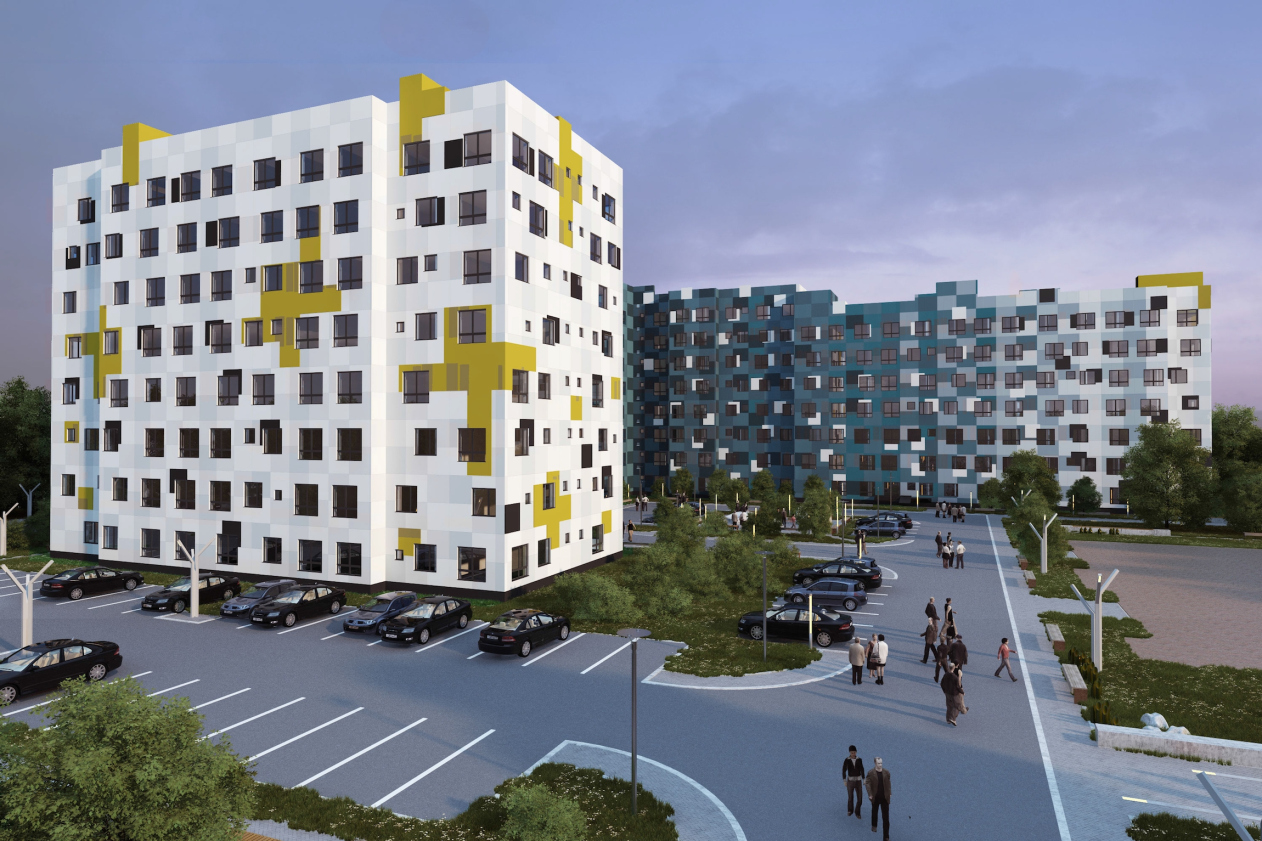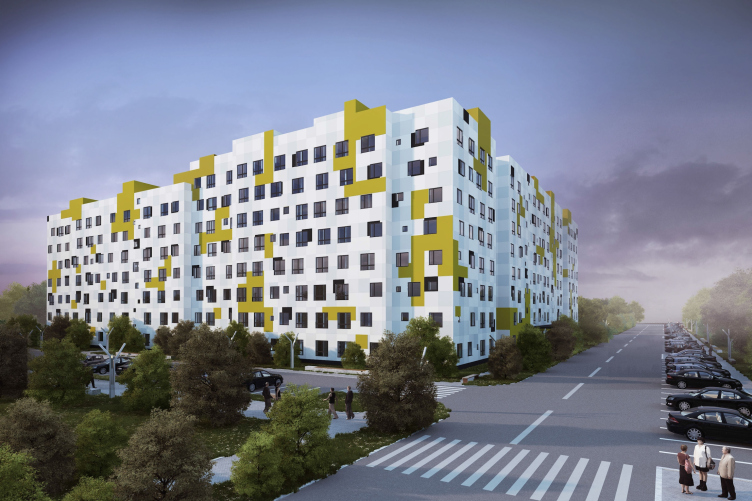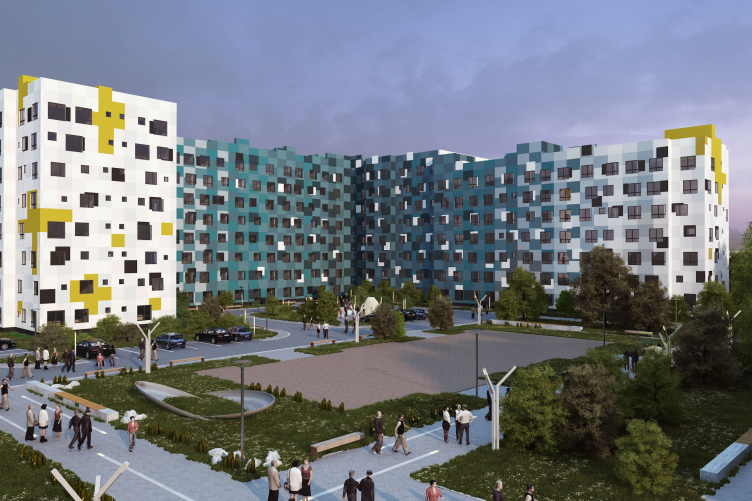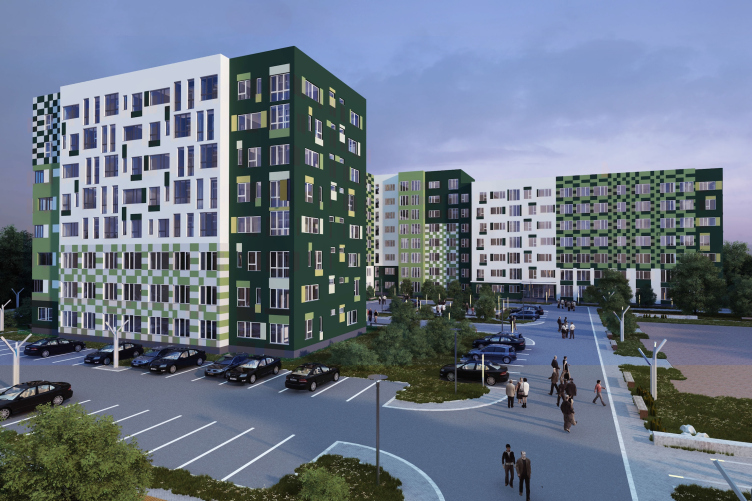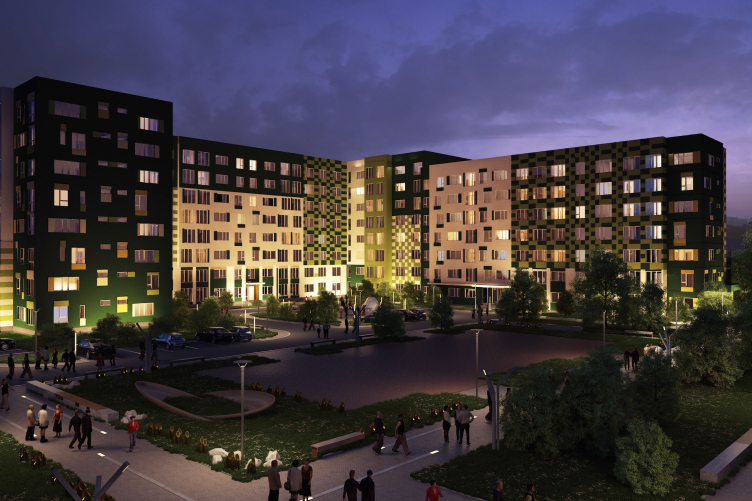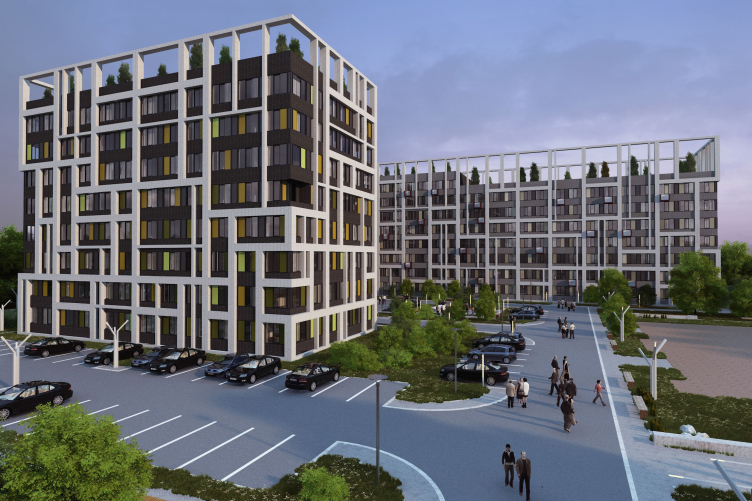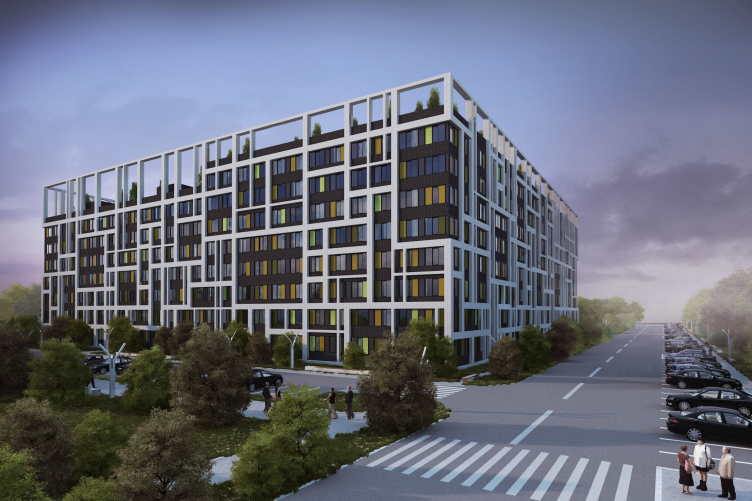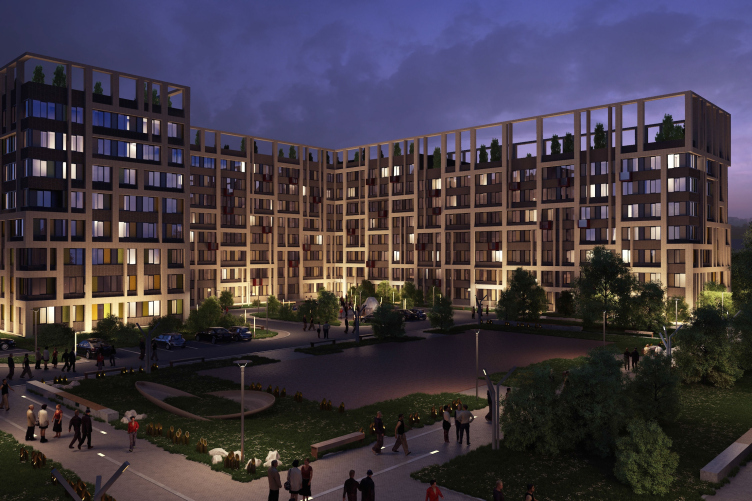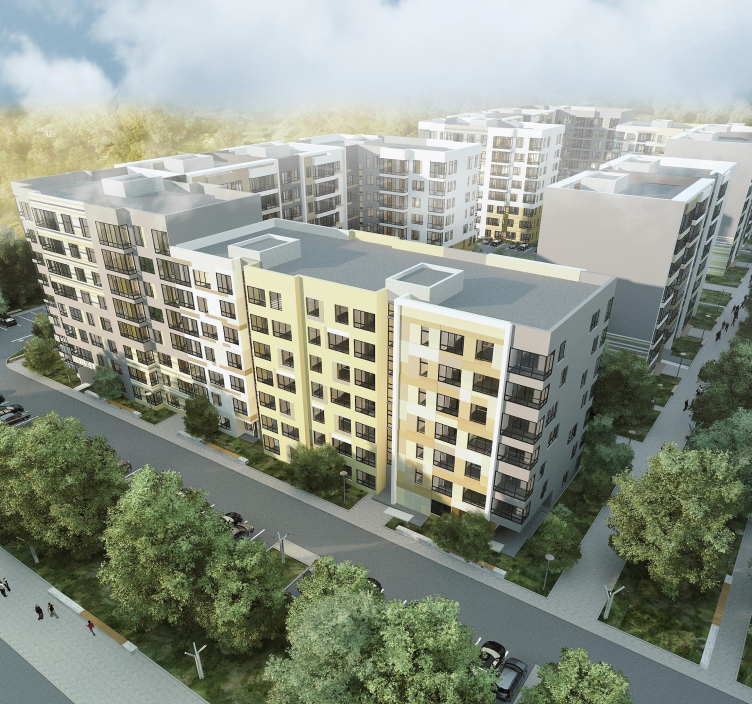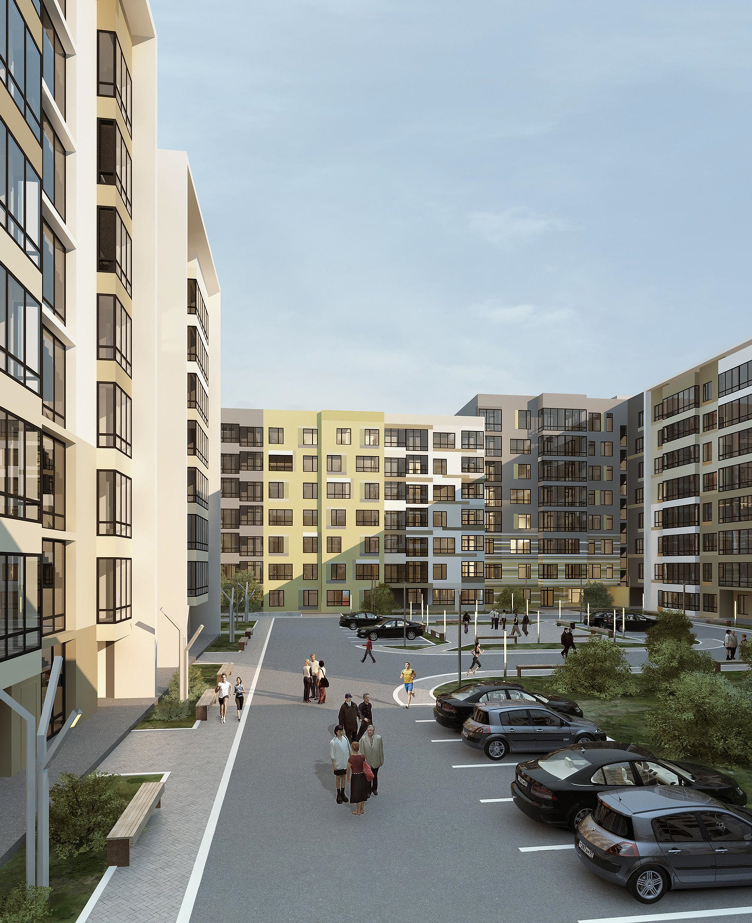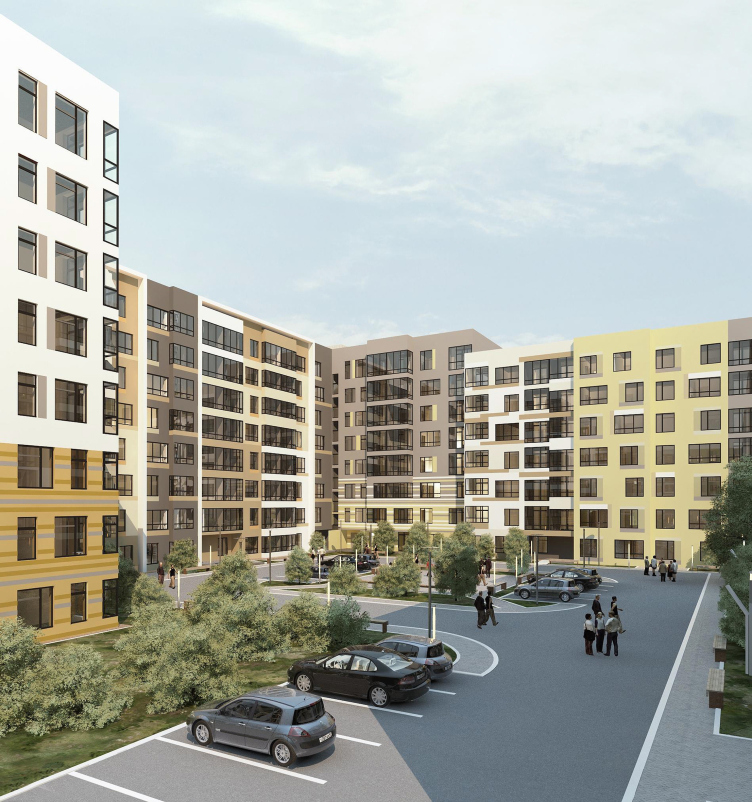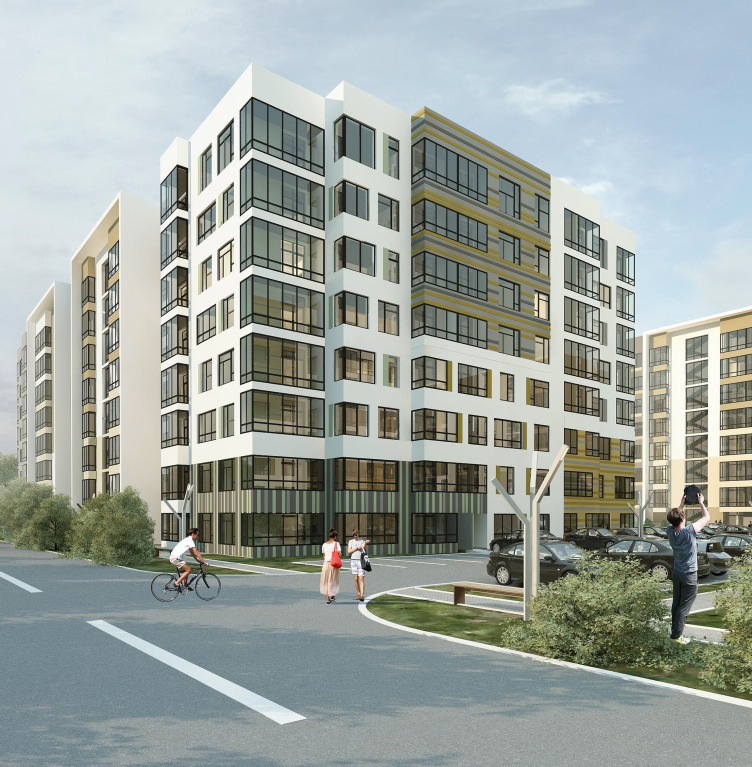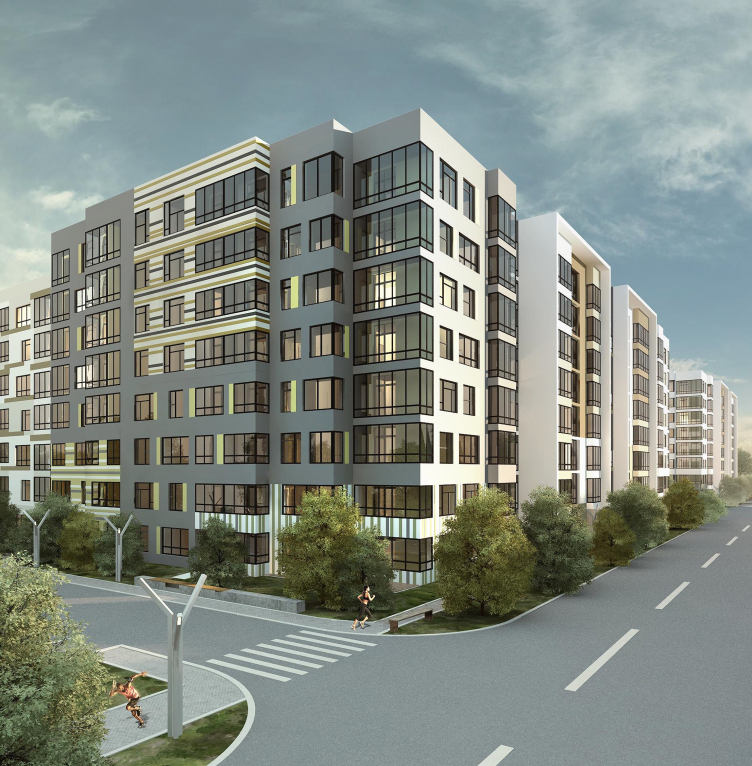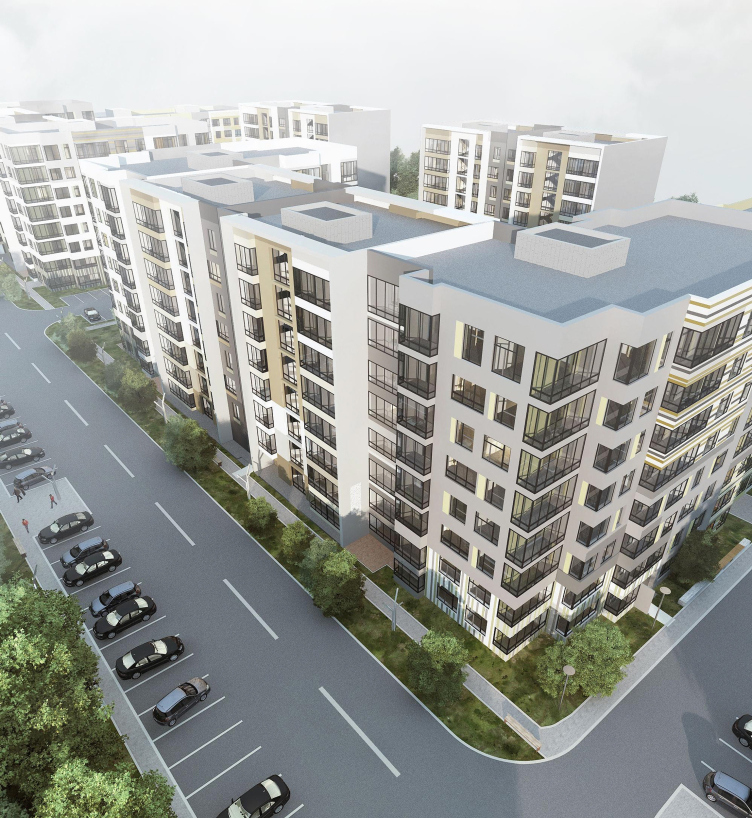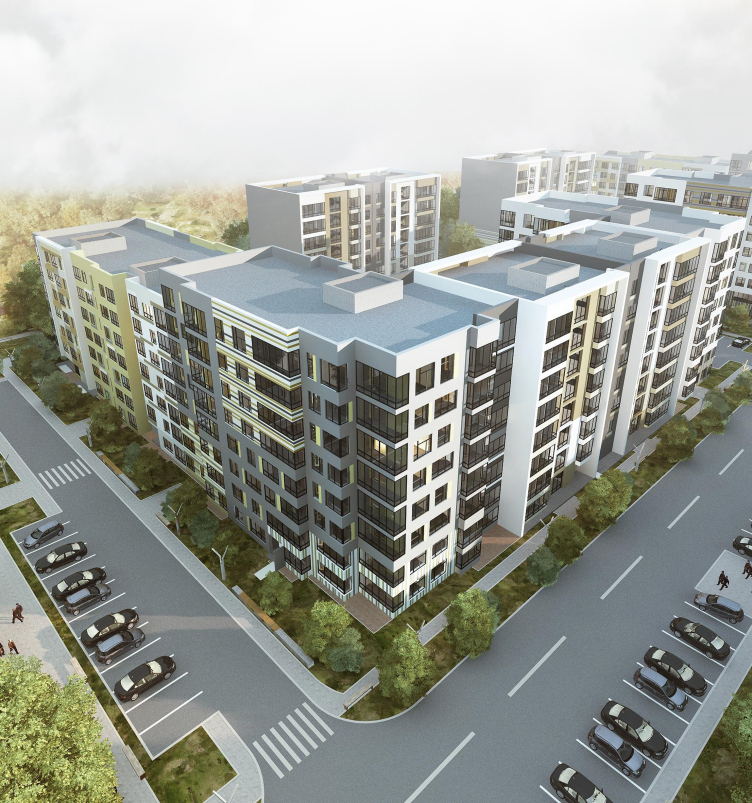Description provided by the architectural studio.
At the investor's commission, the architects came up with a number of options of the facade solutions for the residential quarter that is being designed in the Moscow region, the main function of the façades consisting in making the buildings look comfortable, attractive, and human-proportionate. Still, though, besides this particular task, the architects also tried to endow the project with a number of important qualities that today are becoming the standard in housing projects. It is about designing convenient entrance groups, clear division of the yard and the street space, and saturating the first floors along the inside streets with various public and social functions.
The architects worked with an existing master plan, according to which the project consisted of small-sized quarters of L-shaped buildings and independent two-hallway units stopping the yards. The buildings are no more than seven-eight stories high. Although this residential complex does not have in it the traditional "square" of houses, the separation of the residential yards into public and semi-private territory with limited driving access is clearly readable. Furthermore, the architects stress this by means of design, using, for example, a deeper and more saturated color for the inside façades of the buildings and a lighter color on the outside, as well as various graphic techniques.
Arseniy Leonovich,
Founder and chief architect of PANACOM:
"In the first version, we tried fracturing and scaling the façades by means of using color and plastic solutions, as though dividing larger volumes with local "Tetris"-like inserts. The color here also actively marks the inside and outside territory of the quarter: we are getting a denser, more saturated solution on the yard side, and a more opaque large-figured one - turned on the outside.
Options of the facade solutions for the residential quarter in the town of Vidnoe. Option 1. Project, 2015 © PANACOM
Options of the facade solutions for the residential quarter in the town of Vidnoe. Option 1. Project, 2015 © PANACOM
Options of the facade solutions for the residential quarter in the town of Vidnoe. Option 1. Project, 2015 © PANACOM
The options of the façades proposed by PANACOM allow the architects to endow each of the yards with a similar configuration and a characteristic identify giving the opportunity to "read" and correctly identify your "own" house. In the second option, for example, by means of color and active plastics, and at the expense of including projections and embossed panels of different textures, the architects achieve the effect of joining the "different" houses that look as tough they belonged to different times".
Arseniy Leonovich,
Founder and chief architect of PANACOM:
This solution works according to the principle of the historical city "gaining momentum", when the small "human-proportional" volumes can be glued to each other, each one having, at the same time, its own facade finish - fence lath, bright red window frames, timber framing, and other decorative elements".
Options of the facade solutions for the residential quarter in the town of Vidnoe. Option 2. Project, 2015 © PANACOM
Options of the facade solutions for the residential quarter in the town of Vidnoe. Option 2. Project, 2015 © PANACOM
Options of the facade solutions for the residential quarter in the town of Vidnoe. Option 2. Project, 2015 © PANACOM
Within the framework of the set sizes of the buildings, PANACOM also worked on optimizing and improving the planning solutions, coming up with several options for the residential sections - from economy to business class. The "casing" also will be changing in accordance with the "contents": for example, in the third option that refers to the business-class format, the buildings are getting wider glazing, while the roof is made usable, with a possibility of placing the recreation area upon it.
Options of the facade solutions for the residential quarter in the town of Vidnoe. Option 3. Project, 2015 © PANACOM
Options of the facade solutions for the residential quarter in the town of Vidnoe. Option 3. Project, 2015 © PANACOM
Options of the facade solutions for the residential quarter in the town of Vidnoe. Option 3. Project, 2015 © PANACOM
The overall plastic solution also includes stanza balconies, while one of the options included the outdoor air conditioning units marked by the red color. In the other versions, the air conditioners - the placement of which is regulated by the appropriate regulations nowadays - are hidden inside the stanza balconies. The plastic solutions also vary along the vertical axis: sections of different height are combined in various ways which goes a long way to form a diverse and interesting skyline.
Options of the facade solutions for the residential quarter in the town of Vidnoe. Option 4. Project, 2015 © PANACOM
In all the solutions, the architects paid particular attention to the design of the entrance groups. The new rules and regulations for housing projects that only came into effect in 2015 but have long since become the common decency among all the developers who want to keep abreast of the competition provide for designing the lobbies of residential houses on a level with the yard, so as to make them as accessible as possible, including for people of limited mobility, with clear and convenient navigation. Responding to these requirements, PANACOM designed the hallway entrances with minimal height drop in reference to the yard, and, in accordance with the technical conditions, it is less than half a meter - meaning, two or three steps, with a fair share of glazing, bathrooms, rooms for storing bicycles and go-carts, as well as for the caretaker's office.
Options of the facade solutions for the residential quarter in the town of Vidnoe. Option 4. Project, 2015 © PANACOM
Arseniy Leonovich:
"In this project, a lot of intentions were coming from us as architects who already did a number of large-scale town-planning projects, and caused by our desire to convince our customer that a number of critical parameters, without which you cannot do a modern housing project, must be pre-programmed very early on".
The bottom floors of the residential complex are designed with a view to place apartments in them - that was one of the "givens" that the architects had to work with. Nevertheless, realizing that today's residential environment is successfully developing also at the expense of the active stock of the bottom floors opening up to the inner streets of the blocks, the architects provided for the opportunity of turning the "outside perimeter" (where studios and double-room apartments are situated) into a busy residential front.
As part of the project, the architects also developed a landscaping concept uniting one's spacial perception of all the yards and marking them with various art objects, sport fields and playgrounds, recreation places, and original minor sculptural forms.
Options of the facade solutions for the residential quarter in the town of Vidnoe. Option 4. Project, 2015 © PANACOM
Options of the facade solutions for the residential quarter in the town of Vidnoe. Option 4. Project, 2015 © PANACOM
Arseniy Leonovich:
"Everything that was formulated in Moscow's standards for residential projects is now being actively picked up by the market and the developers. And these many options set by the architects make the ideology that I think is very attractive for the investors and developers. Not so long ago the end result completely depended on the developer's open or narrow mind - but now that we have the city's policy and we have the norms and standards, the developers are forced to offer the product that is guaranteed to be above some certain level. I like this situation very much. We as architects have the mission of bringing the quality of modern comfort to the segment of inexpensive housing, making the stylish and modern housing available to people".
Options of the facade solutions for the residential quarter in the town of Vidnoe. Option 4. Project, 2015 © PANACOM
Options of the facade solutions for the residential quarter in the town of Vidnoe. Option 4. Project, 2015 © PANACOM
Options of the facade solutions for the residential quarter in the town of Vidnoe. Option 4. Project, 2015 © PANACOM
Options of the facade solutions for the residential quarter in the town of Vidnoe. Option 4. Project, 2015 © PANACOM
